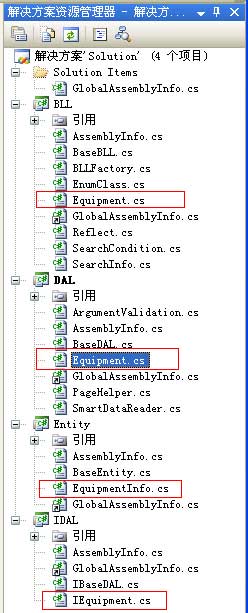- 信息学奥赛一本通1353 表达式括号匹配(stack) (栈)
Star77777
信息学奥赛一本通#数据结构栈信息学奥赛一本通括号匹配
1353:表达式括号匹配(stack)时间限制:1000ms内存限制:65536KB提交数:14209通过数:7610【题目描述】设一个表达式有英文字母(小写)、运算符(+,—,∗,/+,—,∗,/)和左右小(圆)括号构成,以“@@”作为表达式的结束符。请编写一个程序检查表达式中的左右圆括号是否匹配,若匹配,则返回“YESYES”;否则返回“NONO”。表达式长度小于255255,左圆括号少于20
- 力扣55.跳跃游戏
进击的jerk
力扣leetcode游戏算法开发语言c++
55.跳跃游戏-力扣(LeetCode)代码区:classSolution{vectorjump(vectornums){intn=nums.size();vectorstep(n,1e6);//全部设置为1e6step[0]=0;for(inti=0;i&nums){intn=nums.size();vectorstep_ans(n);step_ans=jump(nums);if(step_an
- 金银岛(信息学奥赛一本通-1225)
Doopny@
信息学奥赛一本通算法
【题目描述】某天KID利用飞行器飞到了一个金银岛上,上面有许多珍贵的金属,KID虽然更喜欢各种宝石的艺术品,可是也不拒绝这样珍贵的金属。但是他只带着一个口袋,口袋至多只能装重量为w的物品。岛上金属有s个种类,每种金属重量不同,分别为n1,n2,...,ns,同时每个种类的金属总的价值也不同,分别为v1,v2,...,vs。KID想一次带走价值尽可能多的金属,问他最多能带走价值多少的金属。注意到金属
- 双指针与二分算法
打不了嗝
蓝桥杯c++算法
一.双指针1.基本介绍双指针算法是一种暴力枚举的优化算法,他也被叫做尺取法或者滑动窗口。当我们发现算法需要两次for循环时并且两个指针可以不回退,我们可以利用双指针来优化算法复杂度。2.例题详解题目描述企业家Emily有一个很酷的主意:把雪花包起来卖。她发明了一台机器,这台机器可以捕捉飘落的雪花,并把它们一片一片打包进一个包裹里。一旦这个包裹满了,它就会被封上送去发售。Emily的公司的口号是“把
- 算法刷题区域部分反转
无敌的牛
算法算法
不断创建数组,相加,利用cpp内字符串相加的性质即可。具体代码如下:classSolution{public:stringreverseStr(strings,intk){intsize=s.size();intcount=size/(2*k);stringa;inti=0;for(i=0;ik){reverse(a2.begin(),a2.begin()+k);}else{reverse(a2.
- ResNet改进(11):添加 Squeeze-and-Excitation模块和替换Mish激活函数
点我头像干啥
ResNet改进【有效涨点!】深度学习pytorchpython
本专栏代码均经过测试,可以直接替换项目中的模型,一键运行!采用最新的即插即用模块,有效涨点!!1.SE模块和Mish激活函数SE模块是一种通道注意力机制,旨在增强网络对重要特征通道的关注,从而提升模型的表达能力。它通过显式地建模通道之间的依赖关系,动态调整每个通道的特征响应。SE模块的核心思想:Squeeze:通过全局平均池化(GlobalAveragePooling,GAP)将每个通道的空间维度
- 螺旋折线 | 第九届蓝桥杯省赛C++B组
@Mr.stone
蓝桥杯c++算法
如下图所示的螺旋折线经过平面上所有整点恰好一次。对于整点(X,Y),我们定义它到原点的距离dis(X,Y)是从原点到(X,Y)的螺旋折线段的长度。例如dis(0,1)=3,dis(−2,−1)=9给出整点坐标(X,Y),你能计算出dis(X,Y)吗?输入格式包含两个整数X,Y。输出格式输出一个整数,表示dis(X,Y)。数据范围−109≤X,Y≤109输入样例:01输出样例:3题解:数学计算题目,
- 优选算法训练篇07--力扣LCR179.查找总价格为目标值的两个商品
大胆飞猪
算法训练篇算法leetcode
目录1.题目链接:LCR179.查找总价格为目标值的两个商品2.题目描述:3.解法一(暴力解法,会超时):4.解法二(双指针-对撞指针):1.题目链接:LCR179.查找总价格为目标值的两个商品2.题目描述:购物车内的商品价格按照升序记录于数组price。请在购物车中找到两个商品的价格总和刚好是target。若存在多种情况,返回任一结果即可。示例1:输入:price=[3,9,12,15],tar
- Python入门(函数)
高育良00003
python开发语言
一.基础认识一种映射关系1.1什么是函数呢?概念函数是可以重复执行的语句块,可以重复调用作用用于封装语句块,提高代码的重用性1.2函数的定义语法:deffunction():#def为关键字,function为函数名#语句想要执行的操作returnre#re为返回值二.函数的调用函数名后+小括号()表示函数的执行2.1基本用法语法:函数名(实际调用的参数)2.2调用传参2.2.1位置传参最为常见,
- LeetCode215. 数组中的第K个最大元素
techpupil
算法快速选择leetcode
给定整数数组nums和整数k,请返回数组中第k个最大的元素。请注意,你需要找的是数组排序后的第k个最大的元素,而不是第k个不同的元素。你必须设计并实现时间复杂度为O(n)的算法解决此问题。示例1:输入:[3,2,1,5,6,4],k=2输出:5示例2:输入:[3,2,3,1,2,4,5,5,6],k=4输出:4分析:本题我们能想到最简单的方法就是直接给数组排序,然后取第第N-k个元素,但题目要求是
- hsdb查看Tomcat注解的实例
ok060
tomcatjavahsdb
一、HSDB查看Tomcat注解的实例步骤1.附加Tomcat进程获取Tomcat进程ID:使用jps-l命令查找Tomcat的PID(如12345),确保Tomcat处于运行状态38。启动HSDB:jhsdbhsdb--pid123452.定位目标类打开ClassBrowser:在HSDB界面点击Tools→ClassBrowser,输入目标类名(如com.exam
- 算力租赁:人工智能时代的“水电煤”革命——以NVIDIA 4090为例解读下一代算力解决方案
算法工程gpu
引言:当AI算力需求遇上“算力饥渴症”2023年,ChatGPT仅用2个月突破1亿用户,StableDiffusion让普通人秒变艺术家,但背后是单次训练消耗超10万GB内存、千亿级参数的恐怖算力需求。当全球AI企业陷入“算力饥渴症”时,一种名为算力租赁的创新模式正以每年37%的增速(MarketsandMarkets数据)重塑行业格局。本文将深度解析这一革命性服务,并聚焦搭载NVIDIARTX4
- AI Agent赛道:昙花一现还是生态革命?6大咖拆解泡沫与未来
人工智能比特币区块链web3
作者:CRYPTO币圈不设防币圈不设防第四期Space总结:AIAgent赛道还能火多久?在Web3华语主持人茄哥的主持下,第四期《币圈不设防》围绕“AIAgent赛道还能火多久?”展开深度探讨。本期嘉宾阵容强大,包括Uweb校长于佳宁、TradingBaseAI创始人Mr.Z、BuilderLogEarn、区块链爱好者flyawei、投研博主清风#BTC,以及社区领袖小智。以下是讨论的核心观点总
- AI 真的懂你问的问题吗?
llmclaudeopenai
Hey,我是沉浸式趣谈本文首发于【沉浸式趣谈】,我的个人博客https://yaolifeng.com也同步更新。转载请在文章开头注明出处和版权信息。如果本文对您有所帮助,请点赞、评论、转发,支持一下,谢谢!AI真的懂你问的问题吗?AI—它可能是个「语言魔术师」,但绝对不是「人类大脑」你心血来潮问AI:你:「为什么古埃及人建造金字塔?」AI(认真回答):「古埃及人建造金字塔主要是作为法老的陵墓,同
- C++20中哪些特性对内存管理有帮助?
c++
C++20引入了多项改进和新特性,这些特性在内存管理方面提供了更强大的支持和更高的灵活性。以下是C++20中对内存管理有帮助的主要特性:一、对齐分配器(AlignedAllocator)C++20引入了对齐分配器,允许开发者在分配内存时指定对齐参数,从而确保分配的内存块满足特定的对齐要求。这在处理需要特定对齐的硬件或数据结构时非常有用。cpp复制std::aligned_alloc(64,1024
- SM国密算法深度解析与技术实践
安全
SM国密算法深度解析与技术实践一、算法体系概述SM系列密码算法是由中国国家密码管理局发布的商用密码标准体系,涵盖非对称加密、对称加密、杂凑算法、标识密码等多个领域。其核心组件包括:SM2:基于椭圆曲线的非对称加密算法(GB/T32918)SM3:密码杂凑算法(GB/T32905)SM4:分组对称加密算法(GB/T32907)与国际算法对比类型国密算法国际标准密钥长度安全强度非对称加密SM2RSA-
- Java面试黄金宝典12
ylfhpy
Java面试黄金宝典java面试开发语言
1.什么是Java类加载机制定义Java类加载机制是Java程序运行时的关键环节,其作用是把类的字节码文件(.class文件)加载到Java虚拟机(JVM)中,并且将字节码文件转化为JVM能够识别的类对象。整个类加载过程主要包含加载、连接(验证、准备、解析)和初始化三个阶段。原理加载阶段:此阶段会通过类的全限定名来获取定义该类的二进制字节流。获取途径较为多样,既可以从本地文件系统读取,也能从网络下
- python本地连接minio
伶星37
python网络服务器
在你浏览器能成功访问到你的minio网页,并且成功登录之后。接下来如果你想用python连接数据库,并且想用python连接minio,就可以用这个blog。连接代码client=Minio("localhost:9000",#9000是默认端口号access_key="admin",#你的账户secret_key="password",#你的密码secure=False,#这点我会详细说明)为什
- 梯度下降法理论理解
伶星37
机器学习人工智能
梯度下降法:看似原始却透露着机器学习的本质前提:在研究梯度下降方法之前,你要理解矩阵运算(解析解)的方法矩阵运算目前的缺点只能进行对线性函数经行分析,无法对复杂的函数经行分析什么是梯度,以及梯度向量梯度下降的形象例子以及基本思想有三个兄弟被困在山上,得要死,他们目标是看谁尽快找到山谷中的水源老大比较后选择最陡的方向随便探索一下,就朝较低处走去探测几下就走陡峭的方向梯度下降算法的核心思想就是沿着负梯
- 文件的基本的基本属性
伶星37
linux服务器
为什么要有基本属性Linux系统是一种典型的多用户系统,不同的用户处于不同的地位,拥有不同的权限。为了保护系统的安全性,Linux系统对不同的用户访问同一文件(包括目录文件)的权限做了不同的规定。例子你可以把Linux比作成一个学校,里面的人学生老师校长里面的资料课本学校档案老师个人备案资料学生只能看课本,其他的都不能看,而老师,可以看老师备案资料和课本。校长上面都可以看。在Linux中我们通常使
- MybatisPlus
伶星37
springboot后端
代码部分添加依赖该代码添加位置:就是在springboot配置文件里面的pom.xml里面要添加的东西对新手说的话,如果这一步没有看懂的话,可以去看一下基础,否则这样的话不能做到理解学习//mybatis-plus的一个插件com.baomidoumybatis-plus-boot-starter3.4.2//这个是关于mysql的一种依赖mysqlmysql-connector-java5.1.
- 高等数学,对梯度的理解
伶星37
机器学习
梯度(Gradient)是多变量微分中非常重要的概念。它描述了一个多元函数在某一点的最大上升方向及其变化率,是向量微积分中的基本工具。定义对于一个多变量标量函数f(x,y,z,… )f(x,y,z,\dots)f(x,y,z,…)梯度是一个向量,记为∇f\nablaf∇f或gradfgradfgradf梯度向量的分量是函数fff对各自变量的偏导数,即:∇f=(δfδx,δfδy,δfδz,… )\
- 操作系统练习题
齐 飞
linux
文章目录一、单选题二、多选题三、填空题四、简答题一、单选题1、在计算机系统中配置操作系统的主要目的是()。A、增强计算机系统的功能B、提高系统资源的利用率C、提高系统的运行速度D、合理组织系统的工作流程,以提高系统吞吐量正确答案:B2、操作系统的主要功能是管理计算机系统中的(),其中包括处理机、存储器,以及文件和设备。这里的存储器管理主要是对进程进行管理。A、程序和数据B、资源C、软件D、硬件正确
- Not enough information to list image symbols. Not enough information to list load addresses in ...
Water_Sounds
学习笔记keilmdk
除了绝大部分网上给的解决方法外:Notenoughinformationtolistimagesymbols.Notenoughinformationtolistloadaddressesin…我在向正点原子例程“输入捕获”中添加lcd驱动程序时,发现按照上述链接的做法填了路径什么的,还是报错,最后发现是这个.c文件文件没有添加进来导致这两句话一直是无定义,填进来就好了。
- 服务器负载均衡是什么意思?
lddfff_3a
负载均衡
什么是负载均衡?负载均衡是由多台服务器以对称的方式组成一个服务器集合,每台服务器都具有等价的地位,都可以单独对外供应效力而无须其他服务器的辅助。经过某种负载分管技术,将外部发送来的央求均匀分配到对称结构中的某一台服务器上,而接收到央求的服务器独登时回应客户的央求。均衡负载可以平均分配客户央求到服务器列阵,籍此供应快速获取重要数据,解决很多并发访问效力问题。这种群集技术可以用最少的出资取得接近于大型
- 数据权限访问控制(Apache Sentry)
deepdata_cn
权限管理apachesentry
ApacheSentry最初由Cloudera公司内部开发,针对Hadoop系统中的数据(主要是HDFS、Hive的数据)进行细粒度控制,对HDFS、Hive以及Impala有着良好的支持性。2013年Sentry成为Apache的孵化项目,为Hadoop集群元数据和数据存储提供集中、细粒度的访问控制。其架构包括DataEngine、Plugin、Policymetadata等部分,Plugin负
- 英伟达开源超强模型Nemotron-70B;OpenAI推出Windows版ChatGPT桌面客户端
go2coding
AI日报chatgpt
AI新闻英伟达开源超强模型Nemotron-70B摘要:英伟达近日开源了新型AI模型Nemotron-70B,迅速超越GPT-4o和Claude3.5Sonnet,成为AI社区的新宠。该模型在多项基准测试中表现优异,采用混合训练方法和人类反馈强化学习,模型权重已在HuggingFace发布。Niemotron-70B的开发基于Llama-3.1,且开源数据集加强其训练效果。分析指出,英伟达的策略是
- MongoDB实战-生产环境中分片的部署与配置
perfecttshoot
MongoDB部署配置分片集群mongodb
在生产环境里部署分片集群时,面前会出现很多选择和挑战。下面会介绍几个推荐的拓扑结构。1.部署拓扑要运行示例MongoDB分片集群,你一共要启动九个进程(每个副本集三个mongod,外加三个配置服务器)。咋一看,这个数字有点吓人。一开始用户会假设在生产环境里运行两个分片集群要有九台独立的机器。幸运的是,实际需要的机器要少很多,看一下集群中各组件所要求的资源就知道为什么了。首先考虑下副本集,每个成员都
- 逆向爬虫-筑基篇-第二层-壹-计算机网络和因特网-008
蓝花楹下
逆向爬虫计算机网络网络
第二层网络初探计算机网络和因特网计算机网络与因特网之史分组交换之兴:1961-1972昔时,电话网为天下通信之主宰,其以电路交换之术,使语音恒速传于发收之间。然至20世纪60年代,计算机之重要日增,分时计算机亦现于世。彼时,智者思虑如何将计算机相连,使地理分布之用户共享其能。用户之流量,多具突发之性,如发一令于远机,继而静待其应,或思其答。当此之时,天下有三组智者,各自发明分组交换之术,以代电路交
- 头歌实践教学平台 Python程序设计 实训答案(三)
学习的锅
头哥实践教学平台实训答案python
第七阶段文件实验一文本文件的读取第1关:学习-Python文件之文本文件的读取任务描述本关任务:使用open函数以只写的方式打开文件,打印文件的打开方式。相关知识为了完成本关任务,你需要掌握:文本文件;open函数及其参数;文件打开模式;文件对象常用属性;关闭文件close函数。#请在下面的Begin-End之间按照注释中给出的提示编写正确的代码##########Begin###########
- java数字签名三种方式
知了ing
javajdk
以下3钟数字签名都是基于jdk7的
1,RSA
String password="test";
// 1.初始化密钥
KeyPairGenerator keyPairGenerator = KeyPairGenerator.getInstance("RSA");
keyPairGenerator.initialize(51
- Hibernate学习笔记
caoyong
Hibernate
1>、Hibernate是数据访问层框架,是一个ORM(Object Relation Mapping)框架,作者为:Gavin King
2>、搭建Hibernate的开发环境
a>、添加jar包:
aa>、hibernatte开发包中/lib/required/所
- 设计模式之装饰器模式Decorator(结构型)
漂泊一剑客
Decorator
1. 概述
若你从事过面向对象开发,实现给一个类或对象增加行为,使用继承机制,这是所有面向对象语言的一个基本特性。如果已经存在的一个类缺少某些方法,或者须要给方法添加更多的功能(魅力),你也许会仅仅继承这个类来产生一个新类—这建立在额外的代码上。
- 读取磁盘文件txt,并输入String
一炮送你回车库
String
public static void main(String[] args) throws IOException {
String fileContent = readFileContent("d:/aaa.txt");
System.out.println(fileContent);
- js三级联动下拉框
3213213333332132
三级联动
//三级联动
省/直辖市<select id="province"></select>
市/省直辖<select id="city"></select>
县/区 <select id="area"></select>
- erlang之parse_transform编译选项的应用
616050468
parse_transform游戏服务器属性同步abstract_code
最近使用erlang重构了游戏服务器的所有代码,之前看过C++/lua写的服务器引擎代码,引擎实现了玩家属性自动同步给前端和增量更新玩家数据到数据库的功能,这也是现在很多游戏服务器的优化方向,在引擎层面去解决数据同步和数据持久化,数据发生变化了业务层不需要关心怎么去同步给前端。由于游戏过程中玩家每个业务中玩家数据更改的量其实是很少
- JAVA JSON的解析
darkranger
java
// {
// “Total”:“条数”,
// Code: 1,
//
// “PaymentItems”:[
// {
// “PaymentItemID”:”支款单ID”,
// “PaymentCode”:”支款单编号”,
// “PaymentTime”:”支款日期”,
// ”ContractNo”:”合同号”,
//
- POJ-1273-Drainage Ditches
aijuans
ACM_POJ
POJ-1273-Drainage Ditches
http://poj.org/problem?id=1273
基本的最大流,按LRJ的白书写的
#include<iostream>
#include<cstring>
#include<queue>
using namespace std;
#define INF 0x7fffffff
int ma
- 工作流Activiti5表的命名及含义
atongyeye
工作流Activiti
activiti5 - http://activiti.org/designer/update在线插件安装
activiti5一共23张表
Activiti的表都以ACT_开头。 第二部分是表示表的用途的两个字母标识。 用途也和服务的API对应。
ACT_RE_*: 'RE'表示repository。 这个前缀的表包含了流程定义和流程静态资源 (图片,规则,等等)。
A
- android的广播机制和广播的简单使用
百合不是茶
android广播机制广播的注册
Android广播机制简介 在Android中,有一些操作完成以后,会发送广播,比如说发出一条短信,或打出一个电话,如果某个程序接收了这个广播,就会做相应的处理。这个广播跟我们传统意义中的电台广播有些相似之处。之所以叫做广播,就是因为它只负责“说”而不管你“听不听”,也就是不管你接收方如何处理。另外,广播可以被不只一个应用程序所接收,当然也可能不被任何应
- Spring事务传播行为详解
bijian1013
javaspring事务传播行为
在service类前加上@Transactional,声明这个service所有方法需要事务管理。每一个业务方法开始时都会打开一个事务。
Spring默认情况下会对运行期例外(RunTimeException)进行事务回滚。这
- eidtplus operate
征客丶
eidtplus
开启列模式: Alt+C 鼠标选择 OR Alt+鼠标左键拖动
列模式替换或复制内容(多行):
右键-->格式-->填充所选内容-->选择相应操作
OR
Ctrl+Shift+V(复制多行数据,必须行数一致)
-------------------------------------------------------
- 【Kafka一】Kafka入门
bit1129
kafka
这篇文章来自Spark集成Kafka(http://bit1129.iteye.com/blog/2174765),这里把它单独取出来,作为Kafka的入门吧
下载Kafka
http://mirror.bit.edu.cn/apache/kafka/0.8.1.1/kafka_2.10-0.8.1.1.tgz
2.10表示Scala的版本,而0.8.1.1表示Kafka
- Spring 事务实现机制
BlueSkator
spring代理事务
Spring是以代理的方式实现对事务的管理。我们在Action中所使用的Service对象,其实是代理对象的实例,并不是我们所写的Service对象实例。既然是两个不同的对象,那为什么我们在Action中可以象使用Service对象一样的使用代理对象呢?为了说明问题,假设有个Service类叫AService,它的Spring事务代理类为AProxyService,AService实现了一个接口
- bootstrap源码学习与示例:bootstrap-dropdown(转帖)
BreakingBad
bootstrapdropdown
bootstrap-dropdown组件是个烂东西,我读后的整体感觉。
一个下拉开菜单的设计:
<ul class="nav pull-right">
<li id="fat-menu" class="dropdown">
- 读《研磨设计模式》-代码笔记-中介者模式-Mediator
bylijinnan
java设计模式
声明: 本文只为方便我个人查阅和理解,详细的分析以及源代码请移步 原作者的博客http://chjavach.iteye.com/
/*
* 中介者模式(Mediator):用一个中介对象来封装一系列的对象交互。
* 中介者使各对象不需要显式地相互引用,从而使其耦合松散,而且可以独立地改变它们之间的交互。
*
* 在我看来,Mediator模式是把多个对象(
- 常用代码记录
chenjunt3
UIExcelJ#
1、单据设置某行或某字段不能修改
//i是行号,"cash"是字段名称
getBillCardPanelWrapper().getBillCardPanel().getBillModel().setCellEditable(i, "cash", false);
//取得单据表体所有项用以上语句做循环就能设置整行了
getBillC
- 搜索引擎与工作流引擎
comsci
算法工作搜索引擎网络应用
最近在公司做和搜索有关的工作,(只是简单的应用开源工具集成到自己的产品中)工作流系统的进一步设计暂时放在一边了,偶然看到谷歌的研究员吴军写的数学之美系列中的搜索引擎与图论这篇文章中的介绍,我发现这样一个关系(仅仅是猜想)
-----搜索引擎和流程引擎的基础--都是图论,至少像在我在JWFD中引擎算法中用到的是自定义的广度优先
- oracle Health Monitor
daizj
oracleHealth Monitor
About Health Monitor
Beginning with Release 11g, Oracle Database includes a framework called Health Monitor for running diagnostic checks on the database.
About Health Monitor Checks
Health M
- JSON字符串转换为对象
dieslrae
javajson
作为前言,首先是要吐槽一下公司的脑残编译部署方式,web和core分开部署本来没什么问题,但是这丫居然不把json的包作为基础包而作为web的包,导致了core端不能使用,而且我们的core是可以当web来用的(不要在意这些细节),所以在core中处理json串就是个问题.没办法,跟编译那帮人也扯不清楚,只有自己写json的解析了.
- C语言学习八结构体,综合应用,学生管理系统
dcj3sjt126com
C语言
实现功能的代码:
# include <stdio.h>
# include <malloc.h>
struct Student
{
int age;
float score;
char name[100];
};
int main(void)
{
int len;
struct Student * pArr;
int i,
- vagrant学习笔记
dcj3sjt126com
vagrant
想了解多主机是如何定义和使用的, 所以又学习了一遍vagrant
1. vagrant virtualbox 下载安装
https://www.vagrantup.com/downloads.html
https://www.virtualbox.org/wiki/Downloads
查看安装在命令行输入vagrant
2.
- 14.性能优化-优化-软件配置优化
frank1234
软件配置性能优化
1.Tomcat线程池
修改tomcat的server.xml文件:
<Connector port="8080" protocol="HTTP/1.1" connectionTimeout="20000" redirectPort="8443" maxThreads="1200" m
- 一个不错的shell 脚本教程 入门级
HarborChung
linuxshell
一个不错的shell 脚本教程 入门级
建立一个脚本 Linux中有好多中不同的shell,但是通常我们使用bash (bourne again shell) 进行shell编程,因为bash是免费的并且很容易使用。所以在本文中笔者所提供的脚本都是使用bash(但是在大多数情况下,这些脚本同样可以在 bash的大姐,bourne shell中运行)。 如同其他语言一样
- Spring4新特性——核心容器的其他改进
jinnianshilongnian
spring动态代理spring4依赖注入
Spring4新特性——泛型限定式依赖注入
Spring4新特性——核心容器的其他改进
Spring4新特性——Web开发的增强
Spring4新特性——集成Bean Validation 1.1(JSR-349)到SpringMVC
Spring4新特性——Groovy Bean定义DSL
Spring4新特性——更好的Java泛型操作API
Spring4新
- Linux设置tomcat开机启动
liuxingguome
tomcatlinux开机自启动
执行命令sudo gedit /etc/init.d/tomcat6
然后把以下英文部分复制过去。(注意第一句#!/bin/sh如果不写,就不是一个shell文件。然后将对应的jdk和tomcat换成你自己的目录就行了。
#!/bin/bash
#
# /etc/rc.d/init.d/tomcat
# init script for tomcat precesses
- 第13章 Ajax进阶(下)
onestopweb
Ajax
index.html
<!DOCTYPE html PUBLIC "-//W3C//DTD XHTML 1.0 Transitional//EN" "http://www.w3.org/TR/xhtml1/DTD/xhtml1-transitional.dtd">
<html xmlns="http://www.w3.org/
- Troubleshooting Crystal Reports off BW
blueoxygen
BO
http://wiki.sdn.sap.com/wiki/display/BOBJ/Troubleshooting+Crystal+Reports+off+BW#TroubleshootingCrystalReportsoffBW-TracingBOE
Quite useful, especially this part:
SAP BW connectivity
For t
- Java开发熟手该当心的11个错误
tomcat_oracle
javajvm多线程单元测试
#1、不在属性文件或XML文件中外化配置属性。比如,没有把批处理使用的线程数设置成可在属性文件中配置。你的批处理程序无论在DEV环境中,还是UAT(用户验收
测试)环境中,都可以顺畅无阻地运行,但是一旦部署在PROD 上,把它作为多线程程序处理更大的数据集时,就会抛出IOException,原因可能是JDBC驱动版本不同,也可能是#2中讨论的问题。如果线程数目 可以在属性文件中配置,那么使它成为
- 正则表达式大全
yang852220741
html编程正则表达式
今天向大家分享正则表达式大全,它可以大提高你的工作效率
正则表达式也可以被当作是一门语言,当你学习一门新的编程语言的时候,他们是一个小的子语言。初看时觉得它没有任何的意义,但是很多时候,你不得不阅读一些教程,或文章来理解这些简单的描述模式。
一、校验数字的表达式
数字:^[0-9]*$
n位的数字:^\d{n}$
至少n位的数字:^\d{n,}$
m-n位的数字:^\d{m,n}$

![]() ///
/// ![]() /// 数据访问层的基类
/// 数据访问层的基类![]() ///
/// ![]() public abstract class BaseDAL
public abstract class BaseDAL![]() {
{![]() 构造函数
构造函数![]()
![]() 通用操作方法
通用操作方法![]()
![]() 对象添加、修改、查询接口
对象添加、修改、查询接口![]()
![]() 返回集合的接口
返回集合的接口![]()
![]() 子类必须实现的函数(用于更新或者插入)
子类必须实现的函数(用于更新或者插入)![]()
![]() IBaseDAL接口
IBaseDAL接口![]() }
}